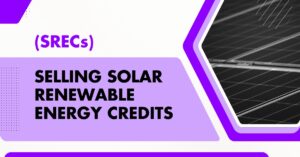How will NEM 3.0 Affect Commercial Solar Systems?

How will NEM 3.0 Affect Commercial Solar Systems?
The California Public Utilities Commission (CPUC) has passed the bill to implement net billing, also known as NEM 3.0. The new rules go into effect on April 14, 2023, and have piqued the interest of business owners who have been looking into switching to solar energy, driven by savings on overhead costs. Whilst solar energy is a long-term investment that pays off in 25-35 years of reduced energy bills, NEM 3.0 effectively brings down the potential net metering savings of establishments with a solar installation by a whopping 75%. However, net billing will still offer business owners a reduction in their electricity bills in addition to the electricity costs offset by solar energy.
How Does NEM 3.0 Differ from NEM 2.0?
Under NEM 2.0, California-based establishments received 30 cents per kWh for extra energy that they released back into the utility grid. That figure has been brought down to 8 cents. NEM 3.0 has been implemented as a counter-active measure after an analysis by the government suggested that non-rooftop owners were subsidizing their neighbors who both had the necessary space and were willing to invest in solar energy. The move has received plenty of criticism and pushback from the community, for obvious reasons.
Apart from the sizable reduction in potential savings, there are several reasons why businesses should jump at the chance to be grandfathered into NEM 2.0. While NEM 2.0 worked under the principle of net metering, NEM 3.0 comes under net billing. What this means is that the value of excess energy produced by your system will be subject to different rates, depending on the time during which the energy is released. Therefore, you will receive credits based on the specific rate at the time when the excess energy is released into the main grid. When the demand is higher, the costs levied by energy grids rise as well, and the overall value that you derive from the extra energy your system creates will depend on the time when it is being pushed into the grid.
The overall payback period for solar panels is expected to be pushed to around a decade, from the current 5-8 years. This means that businesses that decide to go solar might only be able to recover their investment after a decade of use. Nonetheless, investment in solar energy has great long-term potential for savings, especially when incentives and rebates are taken into account.
Should My Business Still Go Solar?

For businesses interested in going solar because of net metering, NEM 3.0 represents a huge spanner in the works. However, commercial solar is eligible for a range of incentives and rebates in California. Business owners can significantly reduce their ROI period by applying for such incentives. Therefore, while NEM 3.0 may extend your payback period, various state incentives, rebates, and tax depreciation can bring the payback period back down to 8 years, with over a decade of solar savings left over.
The potential financial benefit is the single biggest reason why most businesses decide to go solar. NEM 3.0 only impacts one of many potential avenues for increased profit margin. Research shows that consumers gravitate toward sustainable products and will often research the environmental practices of a business before committing to a purchase. Businesses that utilize renewable energy cultivate an environmentally-friendly image that attracts consumers and boosts sales.
If you’re still not convinced, there’s still time to avoid NEM 3.0. Businesses have the option of being grandfathered into NEM 2.0 by submitting an interconnection application by April 14, 2023. IE Construction can guide you toward making the switch before it’s too late.
NEM 3.0 Favors Battery Storage

NEM 3.0 will likely encourage business owners to supplement their existing solar installations with solar batteries. The reason for this is twofold. On the one hand, businesses will be hesitant to pull energy from the local utility grid as their electricity bill increases, preferring to utilize stored solar energy. On the other hand, NEM 3.0 offers varying time-of-use rates, with the highest rates offered at night, meaning that businesses could still save quite a bit by storing solar energy during the day and releasing it into the grid at night.
That’s why, while NEM 3.0 will reduce the potential financial benefit for properties and businesses that do not have energy storage, solar owners with battery storage will be able to save more in the long run. Therefore, businesses that consume large amounts of power now have further incentive to invest in solar batteries.
Go Solar with IE Construction

Net metering isn’t the only way to reduce your payback period. The 30% federal tax credit is applicable until 2033, after which it will be reduced to zero unless Congress decides to renew it again. NEM 3.0 incentivizes solar transformations and gives businesses another reason to switch to renewable energy sources faster. The introduction of net billing encourages businesses to invest in solar batteries for better long-term savings and subsequently makes sure that non-renewable energy sources are steadily replaced for the good of the environment.
However, in order to make the most of a solar installation and maximize savings under NEM 3.0, businesses must first connect with a solar installation service. IE Construction is committed to providing businesses with top-quality solar installations. We have a team of experienced energy advisors who can help you make the transition to solar energy and get the most out of your installation. Contact us today to find out how we can help you move towards a sustainable, cost-effective future with solar energy.





Right here is the perfect website for anybody who wishes to find out about this topic. You know a whole lot its almost hard to argue with you (not that I personally would want toÖHaHa). You certainly put a new spin on a subject that has been written about for decades. Excellent stuff, just excellent!